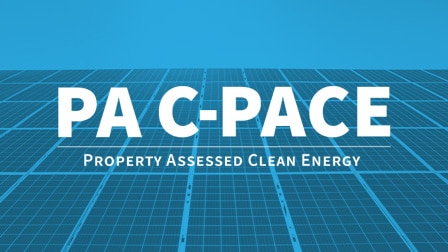The Lehigh Valley Chamber of Commerce hosted the 2024 Lehigh Valley Sustainability Summit at The Club...
» Read MoreRegenerative Organizations: Developing an Understanding of How We Work
“The major problems in the world are the result of the difference between how nature works and the way people think”
– Gregory Bateson
When people and organizations build their capacity to think and work the way nature works, we may find that our ability to regenerate ourselves, the environment, and the communities we work in becomes more attainable. Regeneration is the act of giving new life or energy to something that may have been drained of life or of meaning. In the natural world, a star fish has the ability to regenerate a lost limb. As humans, we have the ability to regenerate and elevate our own energy in the work we do especially as we see ourselves making a meaningful contribution. As we turn our attention to potential instead of problem-solving, new possibilities present themselves and our impact naturally increases. This new way of thinking takes practice. So what does it look like? An organization taking this on intentionally moves away from a machine based, closed-system way of working towards a living systems, regenerative practice. Each person in the organization defines and plays a role in regenerating their work, their community, and the industry they are working in. Employees become more aware of their unique role and how it contributes to the greater whole. Qualitative measures become more valuable as performance and innovation naturally increase because the employees’ sense of agency deepens as they become more connected to what they care about. They begin to recognize that their own self development is directly related to the larger system they are working in, be it economic, energy, social or community development, etc. A regenerative organization uses frameworks to help organize and order their way of thinking to work in alignment with living systems.
What Does a Regenerative Business Look Like?
That depends on who you are talking to and what the organization does, though one thing regenerative businesses often have in common is a foundation in living system principles. Several examples of regenerative organizations are highlighted in Carol Sanford’s books, but none of them look exactly the same, nor did they follow the same path, even if they implemented similar frameworks. That is the beauty of regeneration. It is unique to each individual, to each organization and the systems they are working in or are serving. It is a path your organization consciously creates as you shift your way of thinking and being in the world. It begins to manifest as an organization becomes a self-organizing entity that enables their employees to express their own essence in a way that contributes to the organization’s goals and the systems they impact. With that in mind, instead of asking what a regenerative business looks like, a better question to ask may be how they operate and create processes designed to elevate the systems they are nested within. In order to understand this, it might be worth exploring the paradigms that dominate our culture and how a regenerative business disrupts them as they intentionally shift their way of being in the world.
Disrupting Societal Paradigms
Regenerative organizations use living systems frameworks to help develop and disrupt their habitual patterns, processes, and assumptions to shift the paradigm within which they work. They have evolved from taking things apart and solving problems, a paradigm which dominates our culture, to working from potential. These organizations have taken steps to pull themselves out of or avoid working from a machine, value return paradigm, where extracting value from Earth’s natural resources, including humans, is the primary way of doing business. Regenerative organizations are not working to arrest disorder, or stop doing harm by solving problems through creating efficiencies, standardizing, or operating from best practices meant to be scaled. We have a strong tendency to break things apart and seek ‘one size fits all’ solutions that prevent us from seeing the dynamic relationships between systems and drawing on our creativity. Our education systems teach us to break things apart and prioritize to restore something back to a normal order. Energy efficiency and rating systems do this by creating a list of categories to check off as we address problems. A regenerative organization is creating their own principles and value adding processes which are aligned with how living systems work. They recognize the many possibilities in the world but have moved beyond working from a place of good intentions or simply doing good. Of course, many of us are striving to do good, to be better, but we are also working on developing our capacity to evolve and express our essence, working from a higher level of consciousness and discernment.
Developing a Living Systems Framework
A regenerative field of practice looks beyond the bottom line, even past the triple bottom line, operating from a new paradigm that focuses on regenerating life, not merely extracting value or doing less harm. While there’s no perfect model, looking to living systems for examples helps us develop an understanding of how each entity has a role to play when it comes to strengthening the whole. Regenerative organizations use or develop their own living system frameworks to co-create processes that generate value for all their stakeholders, including their employees, investors, communities they work in, and Earth itself. They become more intentional about how they work, using frameworks to help organize and order their way of thinking and use them as a guide as they work and interact with others. In a sense, they are making the implicit explicit by working to understand why something has become a certain way, using frameworks as instruments to guide their own development moving forward. The paradigms we worked through provide a framework for better understanding how we operate or work in this world. We don’t always see what paradigm we are working in because we live and work in them every day, but by making the subconscious conscious we can then choose how we want to operate and take steps to shift our impact.
Conclusion
The path to becoming a regenerative organization is something your organization will have to discover on your own, but fortunately Carol Sanford has provided some guidance. This guidance is based on her work with businesses around the world through the help of her mentor, Charles Krone, and others in the field. It may begin with understanding the systems you are seeking to transform through your work. How can your organization and you as an individual build your capacity to transform that system? At Sustainable Energy Fund, we have been developing our path slowly but surely through book clubs to help us become more discerning about the way we have been working and how we want to work as we set out on a new strategic direction. It is not easy, but it does give us a better understanding of why things have come to be a certain way and approach things from a different mindset. Which sounds relatively simple: change your mindset, change the world.







